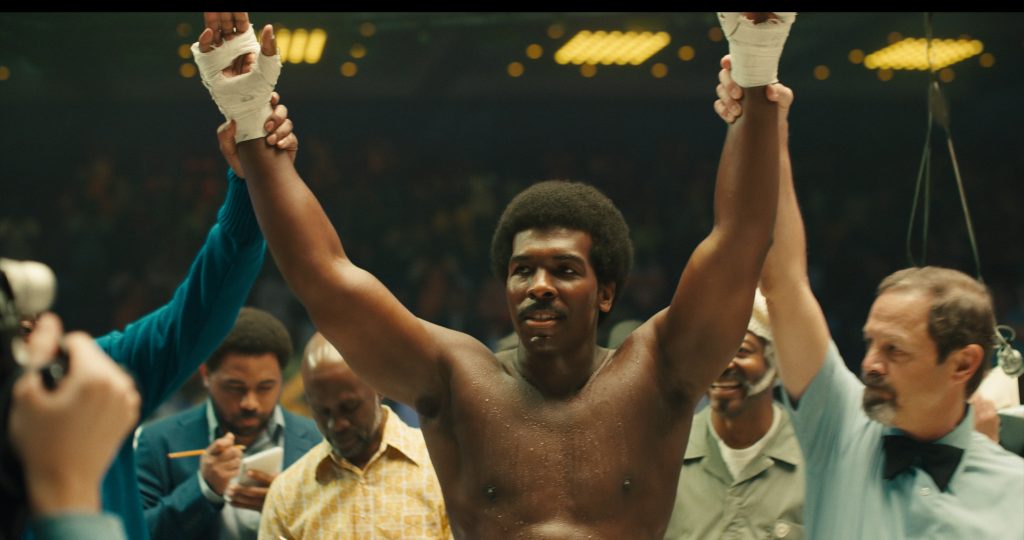
Khris Davis stars as George Foreman in BIG GEORGE FOREMAN: THE MIRACULOUS STORY OF THE ONCE AND FUTURE HEAVYWEIGHT CHAMPION OF THE WORLD.
Company 3’s Siggy Ferstl Uses DaVinci Resolve Studio to Help Define the Decades for Big George Foreman
Fremont, CA – June 30, 2023 – Following the life and boxing career of Heavyweight Champion George Foreman (Khris Davis), feature film “Big George Foreman,” directed by George Tillman, Jr., brings the audience through the decades of Foreman’s life starting with his first fights in the 1960s. The new film follows Foreman’s ups and downs in and out of the ring, as he becomes an Olympic gold medalist, an ordained minister, and the oldest heavyweight champion of all time.
Senior Colorist Siggy Ferstl of Company 3 helped bring the true story to life by working with Tillman and Cinematographer John Matysiak to develop period looks that aided in distinguishing the different decades and fights of Foreman’s life, while balancing the overall story with a distinct, harmonious look that provided consistency throughout the film.
Ferstl’s tool of choice is DaVinci Resolve Studio. “We used Resolve’s magic mask for object isolation and tracking, which simplified the process of selecting individual characters and separating foregrounds and backgrounds for different types of corrections in the fight scenes,” said Ferstl.
“For some fights, we brought down the crowd ‘exposure’ in the grade to add contrast and break things up a bit, creating darker and lighter areas in the frame,” he continued. “We also used Resolve’s Open FX tools to add in little additional touches like lens reflection, flare and glow effects in some of the boxing matches to help integrate the foreground and background.”
Ferstl was able to help the filmmakers distinguish not only the different time periods but also the different locations of Foreman’s fights.
“Each fight is in a different location, so we gave each one a distinct look,” Ferstl explained. “He’s touring the world, fighting in Mexico, Zaire and Jamaica, so each boxing ring was different. We’d use what was shot and accentuate certain elements, always playing off the photography. For example, some rings were more of a powdery blue, while some others were a rich, deep blue and we enhanced those differences. We also adjusted the color temperature in different fights to emphasize different locations. Sometimes we’d have things look more tungsten color, other times we let the space have a clean daylight look and neutral blues.”
In the fight set in Las Vegas in the 1990s, he pointed out, “Everything is cleaner and brighter, and we didn’t add lens flares like we had for earlier fights. Then for a flashback sequence during a pivotal fight, we see scenes from throughout his life and we created an overall desaturated look and heavily vignetted the frame to give the flashback its own look.”
Additionally, Ferstl used Resolve’s grain toolset to add film grain on top of the digitally shot images, not so much to literally emulate film, but more to subtly enhance the imagery.
“We came up with a nice grain pattern for the film, which we varied throughout, adjusting for the look and texture. Resolve’s film grain tool comes with a lot of controls to manipulate the grain beyond just sizing, texture and strength; I could also control how pronounced it was on different color channels or different parts of the grayscale. It really came in handy and was effective when we wanted to add some texture to the image. For example, for an important scene inside a church, the actual location had very sparse walls, so by introducing a little more grain there, it just adds a very subtle amount of texture that we all liked.”